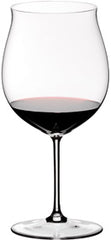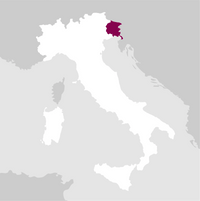Description
In 1987, Torre Rosazza had the idea to produce a wine different from what the local tradition of the time proposed. The wine "Altromerlot" was probably the first wine to be aged for a long time in French oak barrels. The Italian word "altro" stands for "different" because it differed from the Merlot that could be tasted at the time. Now the Altromerlot is recognised as being one of the cutting-edge wines of Friuli-Venezia Giulia in terms of elegance.
Details

Perfume

Color

Taste
Serve at:
16 - 18 °C.
Longevity:
10 - 15 years
Decanting time:
1 hour

Pairings
- Start up year: 1972
- Oenologist: Enrico Raddi
- Bottles produced: 240.000
- Hectares: 74
In the Colli Orientali del Friuli, and especially in Torre Rosazza, the growing of grapevines has a very ancient history. Already known in Roman times, grapes were also grown in the Middle Ages, along with other crops such as olives and grains. In those years, wine was a commodity or a bargaining chip that demonstrated a family’s wealth.
Noble elegance. The history of Torre Rosazza has been tied to the Antonini family, part of the Udine nobility, since the 1600s. Already the lords of the agricultural estate, the Antonini restored the medieval tower and built the villa that became their home in the hills: Turris Rosacea.
After the Antonini, Torre Rosazza passed to the De Marchi family. But more than any other event, the biggest mark on its history was left by the two World Wars. After the Battle of Caporetto, the estate came under Austrian control before returning to Italy at the end of the war. During the World War II it was the scene of fighting between the German occupation army and the Italian Resistance. Read more


| Name | Torre Rosazza Altromerlot 2018 |
|---|---|
| Type | Red still |
| Denomination | Colli Orientali del Friuli DOC |
| Vintage | 2018 |
| Size | 0,75 l |
| Alcohol content | 14.5% by volume |
| Grape varieties | 100% Merlot |
| Country | Italy |
| Region | Friuli-Venezia Giulia |
| Vendor | Torre Rosazza |
| Origin | Hills in the town of Manzano (Udine). |
| Climate | Altitude: 200-250 m. a.s.l. |
| Soil composition | This wine originates from a soil named "Ponca", which is a sedimentary formation integrally made of clayey marl alternating with layers of sandstone. This soil shows low fertility and good capacity to hold water giving the wine a full-bodied taste and colour, tannins, and minerality. Vineyards are located at the top of the hills with a perfect exposure that allows the full ripening of the grapes. The remarkable temperatures and the good ventilation from the Adriatic Sea give tasty and sugary grapes. |
| Cultivation system | Guyot. |
| Plants per hectare | 4,500 kg/hectare. |
| Yield per hectare | 4,000-5,000 kg/hectare. |
| Harvest | By hand in the second/third decade of September, with the selection of bunches on the plant. |
| Wine making | Fermentation in stainless steel vats at a controlled temperature where the must and the skins remain in contact for 8 0 days. |
| Aging | The malolactic fermentation is carried out in Allier oak barriques for at least 24 months. |
| Total acidity | 4.8 gr/L |
| Year production | 8000 bottles |
| Allergens | Contains sulphites |




